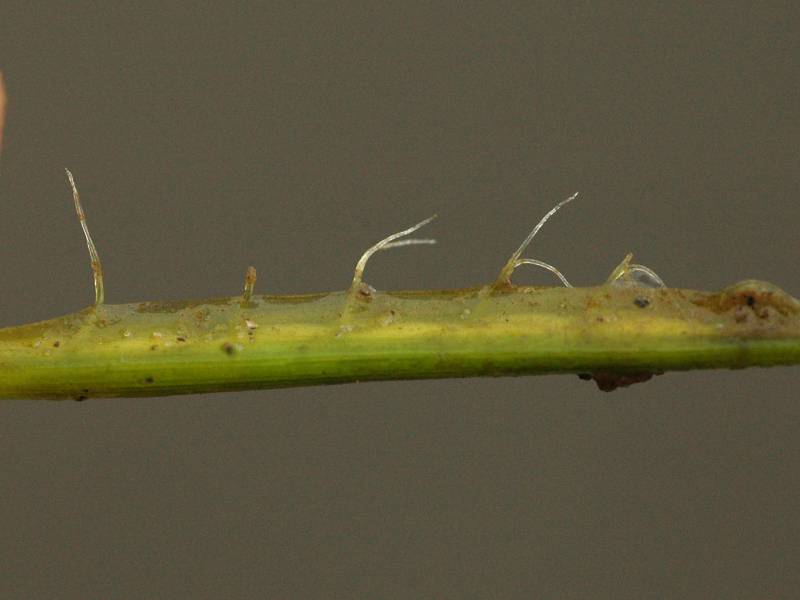Hosted by the University of Washington Herbarium, Burke Museum
Publication: Taxon 50: 432. 2001.
Origin: Introduced from Japan
Herbarium search: CPNWH
Notes: FNA22: "The name Zostera americana was proposed for some of the collections by Neil Hotchkiss from Pacific County, Washington (C. den Hartog 1970). Because Z. americana resembled a previously published species, it was suggested the name should be placed in synonymy, at least until further study could be undertaken of at least the ecology and genetics of the complex (R. C. Phillips and R. F. Shaw 1976; P. G. Harrison 1976). A proposal that Z. americana was synonymous with Z. noltii was based upon the identical or overlapping ranges of most characteristics (R. C. Phillips and R. F. Shaw 1976). Zostera noltii is native to the Atlantic coasts of Europe and Africa and to the Mediterranean Sea area. Therefore, the suggestion implies that Z. noltii has been introduced into North America. No mode of introduction was discussed, however.
Similarly P. G. Harrison (1976) suggested an introduction of an exotic species, but he suggested Zostera japonica instead. A study of populations of Z. americana from Boundary Bay, south of Vancouver, British Columbia revealed no obvious differences between those plants and individuals of Z. japonica and Z. noltii. A comparison of the British Columbia specimens with illustrations by C. den Hartog (1970) of both Z. japonica and Z. noltii indicated the British Columbia plants resembled more the illustrations of Z. japonica than those of Z. noltii. A discussion of possible modes of introduction noted that a brown alga, Sargassum muticum, was introduced into the North American Pacific coast area with seed oysters. Zostera japonica occurs in areas where the oysters were obtained in Japan, and oysters were packed in Zostera species during shipment. Such shipments were possibly the means by which the species was introduced into North America. Harrison\\'s explanation is quite plausible, and I am accepting it until further research solves the problem."
References:
Last updated 5/11/2023 by David Giblin.

